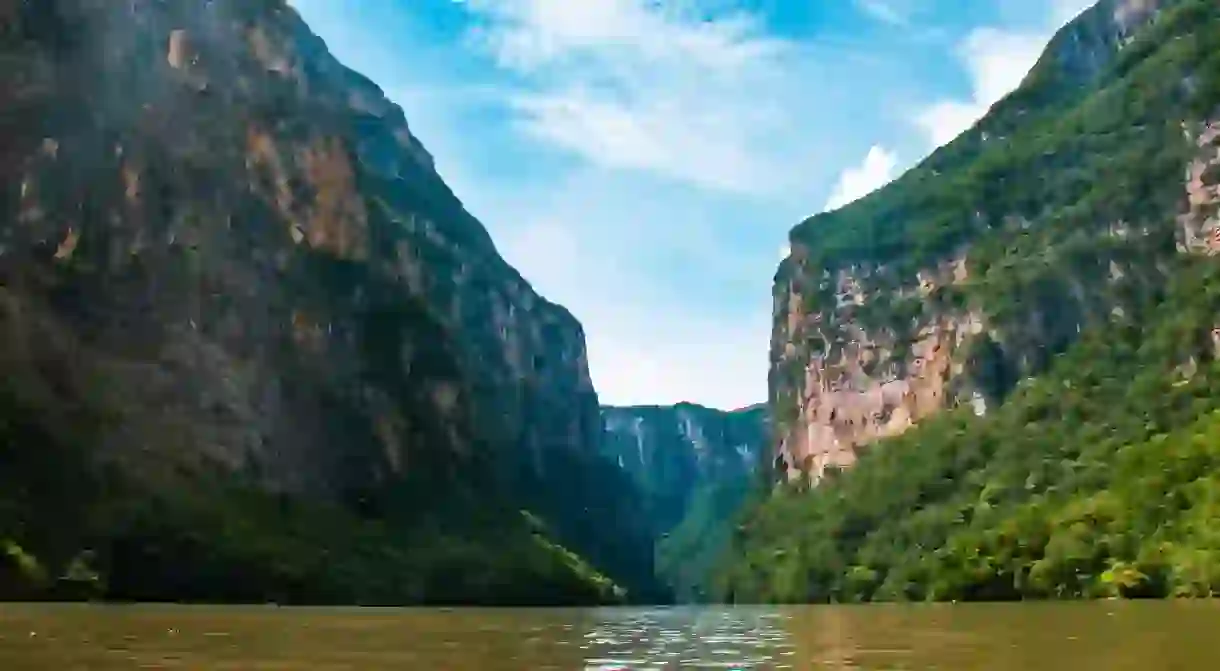National Parks in Mexico You Should Visit At Least Once in Your Lifetime

Mexico is more than sprawling cities and quaint little towns. In fact, there are almost 70 national parks dotted across the country, from those which encompass coral reefs to others with volcanoes at their heart. Here are the most must-visit Mexican national parks to add to your To Visit list.
Mexico
Architectural Landmark, Historical Landmark

There’s so much that Mexico has to offer in addition to their amazing National Parks. From guided tours of Mexico City to epic adventures in Oaxaca and the coastal treasures of the Yucatan peninsula, these vacations in Mexico can cater to every palate.
Sumidero Canyon National Park, Chiapas

Chiapas as a whole is one of Mexico’s richest states for visitors who want incredible outdoor experiences and sheer jaw-dropping natural beauty. However, one of Chiapas’ stand out national park destinations is the Sumidero Canyon National Park. Situated just south of Chiapa de Corzo, the national park is enormous, but, as you might have guessed from the name, the impressive Cañón Sumidero and the river that runs right through it is the main attraction.
Grutas de Cacahuamilpa National Park, Guerrero
The Grutas de Cacahuamilpa (Cacahuamilpa Caves) are one of the world’s largest underground system of caverns and are regularly frequented by adrenaline junkies looking to rappel, rock climb and just plain explore. However, while the eponymous caves are the main attraction of the national park, you can also find underground rivers and botanical gardens there too.
Islas Marietas National Park, Nayarit
Just off the coast of Nayarit lie the Islas Marietas (Marieta Islands). Undeniably one of Mexico’s coolest attractions, this mini archipelago was actually formed by bomb-testing and underground volcanic activity and is now one of the most popular tourist destinations in the region. However, thanks to housing much protected flora and fauna, strict restrictions are in place for visiting the Islas Marietas National Park.
Basaseachic Falls National Park, Chihuahua
From islands to waterfalls, with the northern Basaseachic Falls National Park in Chihuahua state. Situated in the very heart of one of Mexico’s most impressive mountain ranges, the Sierra Madre Occidental range, this national park is known for being home to the country’s second tallest waterfall, the cascada de basaseachic. It’s unsurprising then, that in the language of the indigenous Rarámuri people, Basaseachic means ‘place of the waterfall’.
Iztaccíhuatl-Popocatépetl National Park, Puebla
Iztaccíhuatl-Popocatépetl National Park actually slips across the borders of three states—Mexico State, Puebla and Morelos—although the bulk of the almost 100,000-acre site is found in Puebla. Even if you’re not familiar with the park (or its rather difficult to pronounce name), you’ve likely seen the two prominent volcanic peaks, Mexico’s second- and third-highest mountains, Izta and Popo, before, especially as they can be spotted from Mexico City.
Lagunas de Montebello National Park, Chiapas
The second national park entry from Chiapas states comes courtesy of the Lagunas de Montebello National Park, towards Chiapas’ southern border with Guatemala. Made up of close to 60 multicoloured lakes, this national park is also dominated by pine forests and you can even find two sets of Mayan ruins within its parameters too. Take in the full beauty of the park by canoeing on some of the lakes, visiting some caves or even swimming the cenotes.
Nevado de Toluca National Park, State of Mexico
As the name implies, the jewel in the crown of Nevado de Toluca National Park is the Nevado de Toluca itself, a now-inactive volcano that is popular with day-trippers from Mexico City thanks to both the snow that often covers the sky-high peaks and the two shockingly blue lakes which lie in the volcano’s craters. Accessible by car, take it easy with the altitude and wrap up warm if you want to pay the Nevado a visit.
Arrecifes de Cozumel National Park, Quintana Roo

Our only underwater national park entry forms part of the world’s second largest coral reef, the Mesoamerican Barrier Reef System, and lies on the south side of Cozumel, just off the shores of the Riviera Maya. Try your hand at scuba diving or snorkelling and try to spot the endemic Cozumel Splendid Toadfish.
Palenque National Park, Chiapas
A third and final entry from Chiapas comes courtesy of the Palenque National Park, which boasts the lush archaeological ruins of Palenque as the star attraction. Lesser visited than other popular Mexican pyramids, like Teotihuacán and Chichén Itzá, Palenque is just as worthwhile a destination.
Cumbres de Monterrey National Park, Monterrey
Heading north again, this time to Nuevo León, Coahuila and the Cumbres de Monterrey National Park, which takes up residence in the Sierra Madre Oriental mountain range. Encompassing almost 700 square miles of territory, the Cumbres de Monterrey National Park also includes the famed Cerro de la Silla peak, which is an iconic staple of the Monterrey skyline, as well as the Chipinque ecological reserve and its many hiking trails.
Cumbres del Ajusco National Park, Mexico City
Finally, we relocate back to the Mexican capital for our final national park, the Cumbres del Ajusco. Wait… you mean, Mexico City is home to a national park? In fact, there’s more than one expansive green space which calls Mexico City home, but the Cumbres del Ajusco is easily (yet subjectively) up there as the best. Dominating half of the capital, Ajusco contains Mexico’s highest peak (Pico de Águila), as well as a breathtaking range of flora and fauna.













